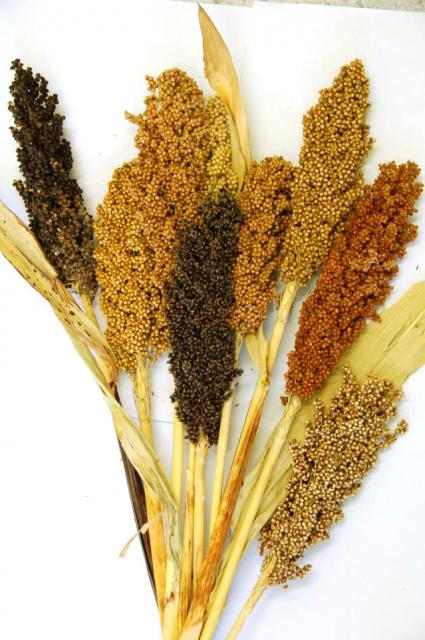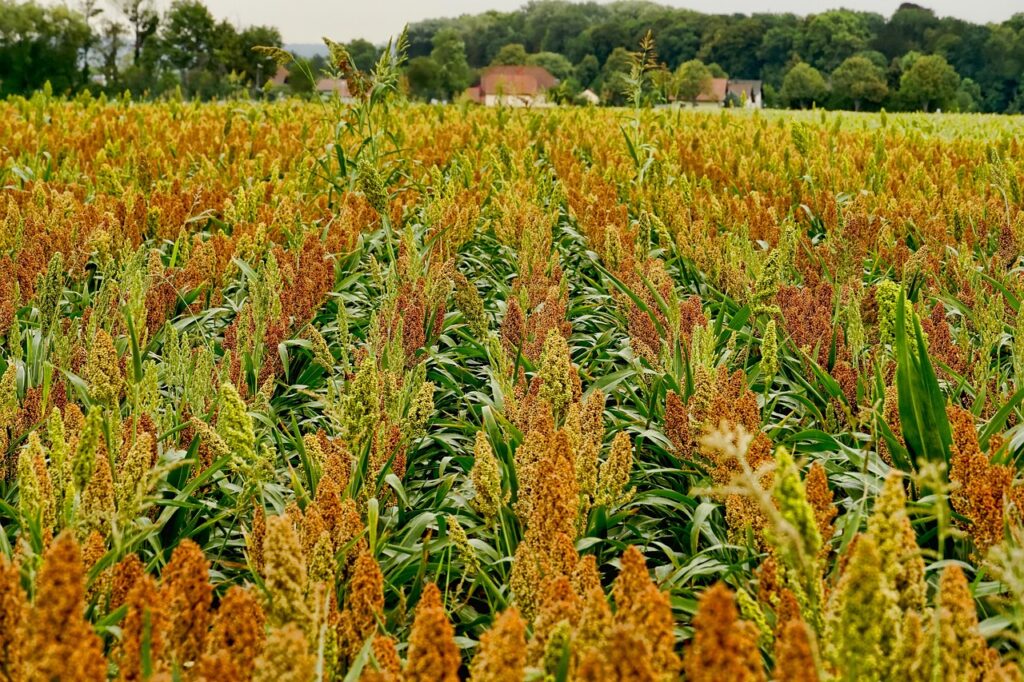1. Varieties of Sorghum
Sorghum is categorized into various types according to its color, usage, and growth traits:
Grain Sorghum: Primarily utilized for food products and animal feed, it encompasses varieties such as Red Sorghum, White Sorghum, and Brown Sorghum, each offering unique nutritional profiles and uses.
Forage Sorghum: Primarily cultivated for animal feed, this tall crop is known for its high yield. Varieties include Sudangrass and Sorghum-Sudangrass Hybrids.
Sweet Sorghum: Grown for its rich sugar content, it’s ideal for syrup production. Varieties include Kafir Corn and Sweet Sorghum.
Broomcorn: Cultivated primarily for its seed heads, which are essential in crafting brooms and brushes.

2. Historical Context
Sorghum ranks among the oldest cultivated crops, with a rich history spanning thousands of years:
Ancient Origins: Sorghum’s roots trace back to Africa, with a cultivation history spanning over 5,000 years. Historical evidence indicates it was a fundamental part of ancient Egyptian and Ethiopian diets.
Expansion into Asia: Approximately 2,000 years ago, sorghum began to spread throughout Asia. It quickly became a vital crop in nations such as India and China, thanks to its ability to thrive in diverse climates.
Introduction to the Americas: Sorghum made its way to the Americas in the 19th century, swiftly adapting to the climate. It soon became a vital crop, especially in the southern United States.
Modern Cultivation: Sorghum is now cultivated worldwide, including in Africa, Asia, the Americas, and Australia. Its importance has shifted from being a traditional staple to a crucial element in contemporary agriculture, especially in areas with limited water resources.
3. Nutritional Information
Sorghum is a nutrient-rich grain with numerous health advantages:
Macronutrients: Packed with dietary fiber, proteins, and carbohydrates, this food offers essential amino acids, making it an excellent choice for vegetarians and vegans.
Vitamins and Minerals: Sorghum provides essential B vitamins (including B6 and folate), iron, magnesium, phosphorus, and potassium.
Antioxidants: Rich in antioxidants like polyphenols and flavonoids, it aids in shielding the body from oxidative stress and inflammation.
4. Culinary Applications
Sorghum’s adaptability makes it perfect for a variety of culinary uses:
Whole Grain: Use cooked sorghum as a side dish, toss it in salads, or make it the foundation for grain bowls.
Flour: Sorghum flour is essential for gluten-free baking, perfect for bread, muffins, pancakes, and various baked treats.
Popped Sorghum: Popped sorghum offers a crunchy and nutritious alternative to popcorn.
Syrup: Sweet sorghum is transformed into syrup, serving as a natural sweetener in a variety of recipes.

5. Environmental Effects
Sorghum offers numerous environmental benefits:
Drought Resistance: Exceptionally drought-tolerant, it thrives in arid and semi-arid regions, making it an excellent crop choice.
Efficient Water Use: Sorghum uses significantly less water than many other grains, aiding in agricultural water conservation.
Soil Health: With its deep root system, it aids in soil conservation and prevents erosion.
6. Worldwide Impact
Sorghum is vital for global agriculture and food security:
Food Security: As a key staple in many developing nations, it offers vital nutrients and energy.
Economic Significance: Sorghum sustains the livelihoods of millions of farmers globally, especially in areas where alternative crops struggle to thrive.
Research and Development: Continuous research focuses on improving sorghum varieties, boosting yields, and adapting the crop to evolving climate conditions.
Final Thoughts
Sorghum is a remarkable grain with a rich history and substantial global impact. Its nutritional value, versatile culinary applications, and environmental benefits make it a crucial crop for both traditional and modern agriculture. As the world grapples with climate change and food security challenges, sorghum’s importance as a sustainable and nutritious food source will only increase.
